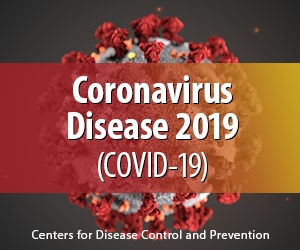By Phanessa Svenska, MSN, RN, CNL ®, and Virtual Ability Community Member.
Do the Five and Help Stop Coronavirus
- HANDS: Wash them often
- ELBOW: Cough into it
- FACE: Don't touch it
- FEET: Stay 6 feet apart
- FEEL: SICK? Stay home
COVID-19 symptoms:
- FEVER Measured or not measured but you feel like you have a fever (subjective). General guideline - Your measured temperature is at or above 100.0 F. or 37.7 C.
- Lower respiratory tract symptoms
- DRY COUGH
- SHORTNESS OF BREATH
- Aching muscles
- Fatigue
Less typical coronavirus symptoms include headache, vomiting, diarrhea, or phlegm build-up.
COVID-19 has not shown upper respiratory tract symptoms. Stuffy or runny nose have NOT BEEN typical symptoms of COVID-19.
(Centers for Disease Control and Prevention (CDC), 2020: https://www.cdc.gov/coronavirus/2019-ncov/symptoms-testing/symptoms.html.)
Common symptoms of COVID-19, Influenza, and a Cold.
How are they different and how are they the same?If you suspect you have COVID-19 CALL AHEAD.
Talk with your health care provider over the phone. In the United States steps are being taken to set up drive through testing sites. Health care personnel will come to the car and test you in the car. You will return home if you are mildly ill and the test results will be communicated with you over the phone or electronically. A handful of drive through testing centers are beginning to operate. They are not yet available in most areas.
Call ahead if you have a medical appointment. Call your health care provider and tell them you have or might have COVID-19. This allows the medical personnel to prepare. The goal is to prevent contamination of the health care clinic or emergency room with the virus. It is important to limit exposing health care workers and other patients to the virus. If medical staff know you are coming they can wear personal protective equipment when they work with you. They will likely take you to an area separated from other patients.
What people should do if they get a little sick with COVID-19
- STAY HOME: except to get medical care.
- A little sick with COVID-19 is being called mild illness.
- People who are mildly ill with COVID-19 are able to isolate at home.
- Do not go to work, school, or public areas. Do not use public transportation.
- Stay away from others as much as possible. At home separate yourself from other people in your home.
- Try to use one room and if possible a separate bathroom. Limit contact with pets and animals.
- WEAR A FACE MASK.
- If you are sick wear a mask when you are around other people, pets, or before you enter a health care provider's office.
- Wear a mask if you are a care giver and the sick person cannot wear a face mask.
- COVER YOUR MOUTH AND NOSE IF YOU COUGH OR SNEEZE WITH A TISSUE.
- Dispose used tissues in a lined trash can immediately.
- Clean your hands immediately after a cough or sneeze.
- If no tissue is available cough into your elbow, not your hands.
- CLEAN YOUR HANDS OFTEN.
- Wash hands with soap and water for at least 20 seconds.
- Avoid touching your eyes, nose and mouth with unwashed hands.
- If soap and water is not available, clean hands with an alcohol based cleaner that contains at least 60% alcohol.
- Avoid sharing personal items such as dishes, drinking glasses/cups, eating utensils, towels, or bedding.
- Wash these items thoroughly with soap and water after use.
- Clean and disinfect all high touch surfaces every day (counters, table tops, door knobs, bathroom fixtures, toilets, phones, keyboards, tablets, bedside tables).
- Clean and disinfect areas that have or may have body fluids on them (blood, stool, etc.).
- Self-monitored Isolation for mild illness
- Stay at home until you are instructed to leave. The decision to discontinue home isolation precautions should be made on a case by case basis in consultation with your health care provider and government health care departments.
Monitor your symptoms
Call the Emergency Medical Services (911 in the United States) if you have a medical emergency. If you have a medical emergency and need to call an ambulance, notify the dispatch personnel that you have, or are being evaluated for COVID-19. If possible, put on a face mask before emergency medical services (EMS) arrive. If you do not have a mask expect EMS workers to give you one to put on when they arrive.Call EMS for worsening symptoms such as:
- Difficulty breathing or shortness of breath (respiratory distress)
- Persistent pain or pressure in the chest
- New confusion
- Bluish lips or face
- If you are unable to be aroused your care giver needs to call
- Severe worsening symptoms
(Centers for Disease Control and Prevention (CDC), 2020: https://www.cdc.gov/coronavirus/2019-ncov/symptoms-testing/symptoms.html.)
Reference:
Centers for Disease Control and Prevention. (2020).
Coronavirus COVID-19: https://www.cdc.gov/coronavirus/2019-ncov/index.html



No comments:
Post a Comment
Got a Comment?